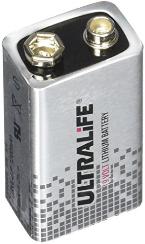Many Gizmo Engineering products are offered with choice of battery or plug-in versions. Here are some thoughts on choice of power.
Battery versus Plug-in Power
Electrical plugs are, by design, meant to be easily unplugged. With alarm systems however, that compromises their reliability because they can become unplugged so many ways:
- A annoyed operator can simply yank the plug out to silence the alarm, and forget to plug it back in.
- Sometimes an outlet is “borrowed for some emergency”.
- Cords can get tripped on, or snagged, and come unplugged inadvertently.
- The circuit breaker for a branch power line can trip and not be noticed if nothing important is on that line.
- Power outages are a time when alarms are most needed because thats when pumps stop pumping and normal protections may not be there. Even when power returns, many systems need to be reset before operating again. This is the time when fuses often tend to blow because of the abrupt startup surge.
- Plug connections can oxidize in corrosive environments.
Advantages of Battery Power
Battery power by comparison, is uninterruptible, and the alarm can only fail if someone willfully disconnects the battery. The downside is of course that batteries eventually discharge. Now though, battery technology has advanced to the point where some batteries can last for 20 years.
- Batteries can discharge two ways: by powering the buzzer and LED, and by passive discharge. The LED and buzzer in most cases consume in the area of 30mA depending on the product. The standard Lithium 9V “square” battery that we provide has a capacity of 1200mA-hr which means that this product would last for 2400 minutes continuously. If the battery does not actively alarm, there is still a passive discharge which is a property of the battery. This rate depends on the battery chemistry, but will either be 10 years of 20 years before the capacity diminishes to 80% of new.
Low Battery
On our products with a circuit board, there is usually a feature that reduces the output after 60 minutes of alarming. After this time, the buzzer and LED will activate for only 5 seconds every 30 seconds to reduce power consumption. This is enough alarming to get someone’s attention. Depending on the type of LED this allows the unit to run for weeks. When the battery voltage runs low, there is a low-battery alert that has a distinct stacatto pattern. Again, 5 seconds out of every 30 seconds is enough to get attention.
Choice of Battery?
Our standard battery is a Lithium manganese dioxide chemistry. One such product we have used is Ultralife’s primary cell U9VL It provides 1200 mA-hrs of capacity which translates to around 50 hours of actual alarm activity. Or put another way, 3000 minutes of alarming. This translates to a few years of normal use typcally.
In cases where the alarm is rarely activated, then the internal-discharge determines the life. The discharge rate of Lithium Manganese Dioxide batteries is approximately 2% per year which means that after 10 year the self discharge will reduce the charge to 80% of a new battery. (80% is the common industry-accepted threshold to say when a battery is “spent”)
Our Intrinsically Safe products use a Lithium Thionyl Chloride primary battery which has a 2400mA-hr capacity. With a passive (internal) discharge rate of only 1% per year, they are capable of idel monitoring for 20 years!

